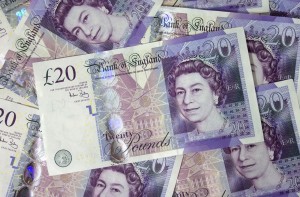 Yesterday’s trade saw GBP/JPY within the range of 190.60-192.96. The pair closed at 192.84, surging 0.79% on a daily basis, while marking a third consecutive day of gains. The daily high has also been the highest level since June 30th, when the cross registered a high of 193.08.
Yesterday’s trade saw GBP/JPY within the range of 190.60-192.96. The pair closed at 192.84, surging 0.79% on a daily basis, while marking a third consecutive day of gains. The daily high has also been the highest level since June 30th, when the cross registered a high of 193.08.
At 7:44 GMT today GBP/JPY was up 0.22% for the day to trade at 193.36. The pair touched a daily high at 193.63 at 7:08 GMT. It has been the highest level since June 26th, when a daily high of 195.28 was reached.
A number of macroeconomic reports are to be watched today, as follows:
Fundamentals
United Kingdom
Unemployment rate by ILO, claimant count change
The number of jobless claims in the United Kingdom probably dropped by 8 800 in June, according to market expectations, following a drop by 6 500 in May. If so, June would be the 32nd consecutive month of decline in the number of claims. Mays rate of decrease, on the other hand, has been the lowest one since February 2013, when claims were 5 300 less. At the same time, the claimant count rate, which represents the percentage change of jobless claims compared to the entire work force, probably remained steady at 2.3% for a fourth straight month in June. If so, this would be the lowest claimant count rate in at least 8 years.
The rate of unemployment in the UK, estimated in accordance with ILO (International Labour Organization) standards, probably remained steady at 5.5% during the three months to May compared to the same period a year ago. If so, this would be the lowest rate since the three months to July 2008, when the unemployment level was reported at 5.5%.
During the period February-April there were 31.05 million people in employment, or an increase by 114 000 compared to the three months to January and also 424 000 more compared to February-April a year earlier. 22.74 million people were in full-time employment, an increase by 362 000 compared to a year ago, while 8.31 million people occupied a part-time job.
During the period February-April 1.81 million people were unemployed, or 43 000 fewer than in the three months to January and 349 000 fewer compared to February-April 2014.
In February to April 2015 there were 9.02 million people aged between 16 and 64, who were out of work and not seeking or available for employment, according to data by the Office for National Statistics (ONS). This represented a decrease by 10 000 compared to the three-month period to January 2015, but also an increase by 60 000 compared to February-April 2014.
The rate of unemployment refers to the percentage of economically active people, who are currently unemployed. According to the ILO approach, people who are considered as unemployed are either: 1) out of work, but are actively searching for employment, or 2) out of work and are waiting to be hired again during the next two weeks.
The ILO Unemployment Rate is based on a monthly survey, known as the Labour Force Survey in the United Kingdom, with approximately 40 000 individuals being interviewed every month. This indicator reflects overall economic state in the country, as there is a strong correlation between consumer spending levels and labor market conditions. Low rates of unemployment are accompanied by higher spending, which causes a favorable effect on corporate profits and also accelerates overall growth. In case the rate of unemployment met expectations or dropped even further, this would certainly have a bullish effect on the sterling. The official report by the ONS is due out at 8:30 GMT.
Correlation with Major currency pairs
Taking into account the week ended on July 12th and the daily closing levels of the currency pairs involved, we come to the following conclusions in regard to the strength of relationship:
GBP/JPY to GBP/USD (0.9631, or very strong)
GBP/JPY to USD/JPY (0.9596, or very strong)
GBP/JPY to AUD/USD (0.6617, or strong)
GBP/JPY to EUR/USD (0.1297, or weak)
GBP/JPY to NZD/USD (-0.5917, or strong)
GBP/JPY to USD/CHF (-0.6493, or strong)
GBP/JPY to USD/CAD (-0.8259, or very strong)
1. GBP/JPY moved almost equally in one and the same direction with GBP/USD and USD/JPY during the examined period.
2. GBP/JPY moved strongly in one and the same direction with AUD/USD.
3. GBP/JPY moved almost equally, but in the opposite direction compared to USD/CAD during the past week.
4. GBP/JPY moved strongly in the opposite direction compared to USD/CHF and NZD/USD.
5. The correlation between GBP/JPY and EUR/USD movement was insignificant during the period in question.
Bond Yield Spread
The yield on Japanese 2-year government bonds went as high as 0.015% on July 14th, after which it slid to 0.013% at the close to gain 0.003 percentage point on a daily basis.
The yield on UK 2-year government bonds climbed as high as 0.653% on July 14th, or the highest level since July 2nd (0.662%), after which it fell to 0.612% at the close to gain 1.4 basis points (0.014 percentage point) for the day, while marking a fifth consecutive day of increase.
The spread between 2-year UK and 2-year Japanese bond yields, which reflects the flow of funds in a short term, expanded to 0.599% on July 14th from 0.573% during the prior day. The July 14th difference has been the most considerable one since July 1st, when the yield spread was 0.605%.
Meanwhile, the yield on Japans 10-year government bonds soared as high as 0.477% on July 14th, or the highest level since July 7th (0.484%), after which it slid to 0.452% at the close to appreciate 1.6 basis points (0.016 percentage point) compared to July 13th.
The yield on UK 10-year government bonds climbed as high as 2.170% on July 14th, or the highest level since July 2nd (2.178%), after which it slipped to 2.134% at the close to add 1.6 basis points (0.016 percentage point) on a daily basis, while marking a fifth consecutive day of gains.
The spread between 10-year UK and 10-year Japanese bond yields widened to 1.682% on July 14th from 1.667% during the prior day, marking a fifth consecutive day of expansion. The July 14th yield difference has been the largest one since June 26th, when the spread was 1.715%.
Pivot Points
According to Binary Tribune’s daily analysis, the central pivot point for the pair is at 192.13. In case GBP/JPY manages to breach the first resistance level at 193.67, it will probably continue up to test 194.49. In case the second key resistance is broken, the pair will probably attempt to advance to 196.03.
If GBP/JPY manages to breach the first key support at 191.31, it will probably continue to slide and test 189.77. With this second key support broken, the movement to the downside will probably continue to 188.95.
The mid-Pivot levels for today are as follows: M1 – 189.36, M2 – 190.54, M3 – 191.72, M4 – 192.90, M5 – 194.08, M6 – 195.26.
In weekly terms, the central pivot point is at 189.06. The three key resistance levels are as follows: R1 – 193.12, R2 – 195.72, R3 – 199.78. The three key support levels are: S1 – 186.46, S2 – 182.40, S3 – 179.80.





